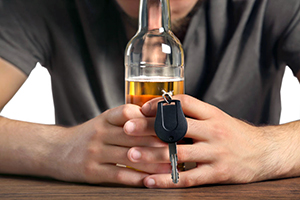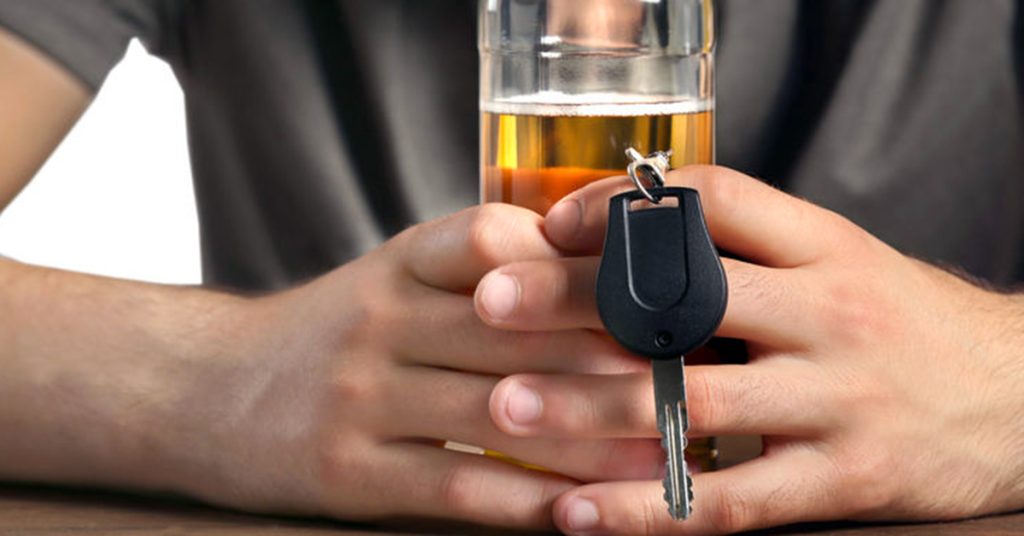Posts Tagged ‘“National Teen Driver Safety Week”’
Discouraging Underage Drinking and Driving Accidents in Massachusetts

Teens are more likely to be killed in an alcohol-related crash than anyone else on the roads, according to the CDC.
Teen Driver Safety Week is Oct. 18-24, 2020. Breakstone, White & Gluck is sharing articles to encourage parents and teens to collaborate and discuss safe driving decisions.
As every parent well knows, it is not easy to talk to your teen about safe driving decisions. You may talk, while your teen just looks at your car keys. Despite the challenges, we encourage you to be patient and stay the course in these conversations, especially when it comes to discouraging drinking and driving.
Talk to your teen about their responsibilities. In Massachusetts, teens who are between 16 ½ and 18 are eligible for a junior operator’s license. Teens face special restrictions, such as they cannot carry friends who are under 18 without supervision for the first six months of driving. They are also banned from driving between midnight and 5 a.m. Like all drivers, junior operators are not allowed to drive under the influence of alcohol or drugs under any circumstances. They can face criminal penalties for operating to endanger/recklessly or while negligent. But the greatest danger is teens who operate while impaired are more likely to cause a drunk driving accident due to their impairment and poor choice.
We are writing about this because teens are more likely to avoid drinking and driving when they make the decision in advance, with a parent’s support, not to drink until they are 21.
Teach teens to respect the legal drinking age. In Massachusetts, you must be at least 21 years old to legally consume alcohol. Make sure your teen knows you expect them not to drink until they reach the legal age. Let them know they can talk to you or another family member if they face pressure to drink or someone offers them alcohol.
Be honest about why you want your teen to avoid alcohol. Explain that you want them to live the best life they can. As a teen, they are still developing physically, cognitively, socially and emotionally. As this happens, teens are still developing their values and their compass for making good decisions.
Consider this: those age 12 to 20 consume 11 percent of all alcohol in the United States, according to the Centers for Disease Control and Prevention (CDC). Because of their inexperience, teens are more likely to consume more drinks than an adult drinker.
Risk for injuries when teens drink and drive. Teens are more likely to be killed in an alcohol-related crash than anyone else on the roads, according to the CDC. In 2016, 1 out of 5 teens involved in fatal car crashes had been drinking.
Teens can put themselves at risk when they drive drunk, but another danger is when they travel with friends who have consumed alcohol. According to the 2017 National Youth Risk Behavior Survey, 16.5 percent of high school students had traveled with a driver who had consumed alcohol in the previous month. This is a revealing number, but it gets worse.
Unfortunately, drinking and driving just paves the way for other poor decisions. According to the CDC, nearly 60 percent of the drivers age 15-20 who were killed in car crashes after drinking and driving weren’t wearing seat belts. Nearly a third of all male drivers in this age group were speeding when they crashed and 20 percent had been drinking and driving.
A teen who consumes alcohol, then causes a car accident resulting in injury may face criminal consequences. Parents can also be held liable for personal injuries if the victim pursues a claim against your car insurance policy or a civil lawsuit. For a teen, the experience of injuring another person is hard to recover from. It’s incredibly more painful when they were being reckless, such as operating under the influence of alcohol.
What you can offer your teen is support and guidance. Look for a teen-parent driving contract online for help. Review the agreement with your teen and make sure they know that you will always come pick them up if they need a ride. Also let them know that driving mistakes and accidents do happen. But you can’t support unsafe choices like drinking and driving, which endangers them and others on the road.
Other negative effects of teen drinking. The consequences of underage drinking are very real, even beyond driving. Teens who engage in underage drinking are more likely to suffer from social problems, such as high absentee rates and failing grades, face legal problems such as arrest and experience physical fatigue and hangovers, according to the CDC. They are also more likely to become the victim of a physical or sexual assault. There can also be a long term impact on their physical development.
Tell your child what every adult knows: delaying that first drink can make life’s hard experiences a little more manageable. Make sure they know you are proud of them and that they should feel good about their decision.
Never provide alcohol to your teens. On the same note, it is illegal to provide alcohol to your teen and their friends. If you allow your teen or others to drink in your home and someone is injured as a result, you could face criminal arrest and even jail time under Massachusetts social host liability laws. There are many stories of parents who have allowed this or even supplied the alcohol. Sometimes, parents have thought it is better to keep teens close if they are going to drink. But this is a dangerous thought and you could end up financially responsible for a very painful situation.
Likewise, make sure you know where your teen is going and with whom. It doesn’t help your teen to spend time at a friend’s home where alcohol is readily available or where their parents or older siblings are frequently drinking in the home.
Free Legal Consultation – Boston Car Accident Attorneys
At Breakstone, White & Gluck, our lawyers provide aggressive and thorough representation to those injured by the negligence of other drivers across Massachusetts. If you have been injured, learn your legal rights. For a free legal consultation, contact our Boston car accident lawyers at 800-379-1244 or 617-723-7676 or use our contact form.
To learn more about our Project KidSafe campaign and our National Teen Driving Safety Week articles, visit www.bwglaw.com/project-kidsafe.
For Teen Drivers, Fewer Passengers is Safer

For safety, teens are not allowed to drive with their friends for the first six months of holding a driver’s license in Massachusetts.
Teen Driver Safety Week is Oct. 18-24, 2020. Breakstone, White & Gluck is sharing articles to encourage parents and teens to collaborate and discuss safe driving decisions.
In Massachusetts, drivers who are at least 16 ½ are eligible to receive their driver’s license after a six-month permit period. Because Massachusetts has a Junior Operator Law, teens do not immediately assume full driving privileges. There are restrictions to help reduce the risk of teen car accidents, including one on passengers.
For the first six months, Massachusetts junior operators are not allowed to travel with friends and others under age 18, unless accompanied by another driver who is at least 21 years old and meets other requirements mentioned in statute below. There is an exemption for siblings and family members. The passenger restriction is a critical part of the law, giving teens more time to learn road skills without the distraction of friends.
M.G.L. c.90 § 8 states, “No person holding a junior operator’s license shall operate a motor vehicle during the first 6 months of licensure while a person under 18 years of age, other than the operator or an immediate family member of the operator, is present in the vehicle unless also accompanied by another person, duly licensed by his state of residence, who is at least 21 years of age with at least 1 year of driving experience and who is occupying a seat beside the driver.”
The passenger restriction should be taken seriously. As we discuss below, the distractions of carrying other teens combined with driver inexperience, can contribute to the risk for car accidents resulting in catastrophic injuries such as brain injuries and paralysis, and death. Car crashes are the leading cause of death among teens, according to the Centers for Disease Control and Prevention (CDC). The junior operator law attempts to give teens more time for practice.
If stopped for carrying unlawful passengers, teens can lose their license for 60 days for the first offense. For the second offense, drivers face a 180-day license suspension and must attend driver attitudinal retraining. There is a one-year license suspension and driver attitudinal retraining for subsequent offenses.
More Passengers, More Risk for Crashes
Research has shown teens need the extra time driving without their friends.
Compared to no passengers, a 16- or 17-year-old’s risk for death per mile increases 44 percent when they carry just one passenger under the age of 21, according to the AAA Foundation for Road Safety. The risk doubles when a teen driver carries two passengers younger than 21. The death rate quadruples when there are three or more passengers.
The older the passenger, the less risk for a car accident. There is a 62 percent decrease for a crash when a passenger age 35 or older is aboard. Take this statistic as motivation to give your teens the keys as you ride along. If you develop a good routine with them, you can help them build a full range of driving skills.
As they become more skilled, reward them by letting them drive to new places – a special lunch spot or a scenic view. This helps them build skills, learn responsibility and find some enjoyment from driving. With more time, they can practice fundamentals, such as how to turn through that intersection near your home, how to check for cyclists and how to stop for pedestrians at crosswalks. When teens drive with their friends, they are less likely to give these things their full attention.
Come Up With a Driving Plan for Your Teen
The takeaway is come up with a plan for your family. If your teen just earned their Massachusetts junior operator license, the state says they are not allowed to drive with friends under 18 for the first few months but that they can drive with their siblings right away. Remember, the law is a guide. This is your choice to make based on what your teen and their siblings are ready for. Your goal is to help your teen steer clear of car accidents. Think about each situation before you say yes.
When your teen is allowed to start driving passengers under 18, take another pause. The data still shows fewer passengers is safer.
You may want to start slow. Allow your teen to drive with just one friend. Choose a friend who is responsible, trustworthy and has a parent whom you know well and shares your views on raising safe and responsible teen drivers. That parent should also share your views on open communication. If something should happen and your teen should find themselves at risk, you want your teen and their friend to both feel they can call for a ride.
Free Legal Consultation – Boston Car Accident Lawyers
Breakstone, White & Gluck has decades of experience representing by negligent driving in Boston, Cambridge, Quincy and across Massachusetts. Through our Project KidSafe campaign, we work to protect children and families. Each year, we write about National Teen Driver Safety Week to encourage parents and teens to talk about safety on the roads.
If you have been injured and want to consult a Boston car accident lawyer, you can visit our website or contact our attorneys at 800-379-1244 or 617-723-7676 for a free legal consultation. You can also use our contact form.
For Teens, Driving Safely Starts With Seat Belts
Teen Driver Safety Week is Oct. 18-24, 2020. Breakstone, White & Gluck is sharing articles to encourage parents and teens to discuss safe driving decisions.
 Seat belts are a simple step for safety. As a parent, you probably remind your child to buckle their seat belt before each ride. But when your teen becomes a licensed driver, you won’t always be there. Still, what you say matters. Teens are twice as likely to wear a seat belt as a driver or passenger when parents set rules and monitor their driving behavior, according to the Teen Driver Source website, which is operated by the Children’s Hospital of Philadelphia.
Seat belts are a simple step for safety. As a parent, you probably remind your child to buckle their seat belt before each ride. But when your teen becomes a licensed driver, you won’t always be there. Still, what you say matters. Teens are twice as likely to wear a seat belt as a driver or passenger when parents set rules and monitor their driving behavior, according to the Teen Driver Source website, which is operated by the Children’s Hospital of Philadelphia.
Tell your teen you expect them to wear a seat belt whenever they travel in a motor vehicle. This includes when they drive and when they are traveling as a passenger. As a second step, put this in writing. Find a teen driving safety agreement with your teen and state this is one of your expectations. If you catch your teen driving without their seat belt, you can step back their access to the keys until you have a discussion.
Seat belts are required by law. Wearing a seat belt is required by law in Massachusetts. Drivers and their passengers must both wear seat belts.
Seat belts protect against deadly force. The goal isn’t to scare your teen. But the reality is cars, trucks and other vehicles are heavy and powerful machinery. We all need to wear seat belts to protect against the potential force of a car crash.
Seat belts reduce the risk of fatal injury to front seat passengers by 45 percent, according to Teen Driver Source. They also reduce the risk of moderate to critical injury by 50 percent.
Seat belts also reduce the risk of ejection from the vehicle. Those who do not wear seat belts are 30 times more likely to be ejected from a vehicle during a traffic crash, according to Teen Driver Source. When a person is ejected from their vehicle, they are more likely to die in a crash. This was the case for 3 out of 4 people.
How seat belts prevent injuries. Seat belts are designed to spread crash forces across the stronger bony parts of the body, including the shoulders, rib cage and pelvis, according to the Institute for Highway Safety (IIHS). They are also designed to prevent occupants from being ejected from a vehicle.
Drivers and passengers should all wear seat belts – to protect themselves and each other. If there is an accident and one of the vehicle’s occupants is not wearing one, they could be ejected and increase the risk of injury to others in the vehicle.
In a frontal crash, drivers and front passengers are left at an increased risk for injury if the back-seat passengers are not wearing seat belts. Exposure to unbelted occupants increases the risk of injury or death to other vehicles by 40 percent, according to the IIHS.
More People Are Wearing Seat Belts in Massachusetts
The good news is more people appear to be wearing seat belts in Massachusetts. In 2018, the state conducted a seat belt usage observation study, reporting 81.58 percent of drivers and front outboard passengers were observed to be wearing seat belts. This was 7.9 percentage points over the year before and the highest ever observed rate in Massachusetts.
To reach this number, the state observed 28,265 drivers and front outboard passengers in 24,2145 vehicles at 147 observation locations. You can learn more by reading the study.
According to the IIHS and other organizations, states with primary enforcement seat belt laws have higher seat belt use rates. In 2019, the IIHS reported states with primary enforcement laws saw 91 percent seat belt use compared to 86 percent. Massachusetts has a secondary enforcement seat belt law, meaning police can stop drivers for traffic violations, then issue citations for failure to wear seat belts. But police cannot stop drivers just because they are not wearing seat belts.
If you are parent or teen, we hope this is good background information. The point is you should wear your seat belt every time you ride – and encourage others to do the same.
Free Legal Consultation – Boston Personal Injury Lawyers
With more than 100 years combined experience, Breakstone, White & Gluck fights for the rights of those injured by the negligence or wrongdoing of others. Our personal injury attorneys specialize in the handling of car accidents, truck accidents and bus collisions in the Boston area. If you have been injured, learn your legal rights. For a free legal consultation, call our attorneys at 800-379-1244 or 617-723-7676. You can also use our contact form.
To learn more about teen driving safety and other topics, please visit our Project KidSafe campaign page.
National Teen Driver Safety Week Offers Safety Reminders for Massachusetts Families
 Motor vehicle crashes are the leading cause of death for teens. Each year, National Teen Driver Safety Week highlights safety insights for families and teens. This year, the event runs from October 18-24th. We encourage you to follow the National Highway Traffic Safety Administration and Teen Driver Source for more information. Teen Driver Source is operated by the Center for Injury Research and Prevention at Children’s Hospital of Philadephia, which offers Facebook and Twitter feeds.
Motor vehicle crashes are the leading cause of death for teens. Each year, National Teen Driver Safety Week highlights safety insights for families and teens. This year, the event runs from October 18-24th. We encourage you to follow the National Highway Traffic Safety Administration and Teen Driver Source for more information. Teen Driver Source is operated by the Center for Injury Research and Prevention at Children’s Hospital of Philadephia, which offers Facebook and Twitter feeds.
According to the National Highway Traffic Safety Administration, the greatest dangers teen drivers face are: alcohol consumption, inconsistent or no seat belt use, distracted driving, speeding and driving with passengers in the vehicle. This year, COVID-19 has introduced a new concern. Teens are driving far less and risk losing core skills. This is where National Teen Driver Safety Week comes in as an important resource this year.
Driving Safety Contract. If you follow Teen Driver Safety Week, you may learn about teen driver contracts. You can also print this parent-teen driving contract from the Centers for Disease Control and Prevention (CDC). Make your own edits and ask your teen to sign as a condition for using your vehicle. Give your teen a copy of the document to file away and review. This is a good way to lay out expectations for your teens and what will happen if they violate the agreement.
Make Sure Teens Get Enough Driving Time. If teens are not driving as much during COVID-19, they risk falling behind on fundamental skills. To prevent this, encourage your teen to drive regularly. When you go out with your teen, split the driving responsibilities so you know they are logging at least some time behind the wheel and you can monitor their progress.
Hold back judgment and sharp comments if you see some of their skills have regressed. This may happen. Just help them get practice in where they need it. Take advantage of empty parking lots and slower times of the week. You can get them back on track.
Drive Around Town With Your Teen. When you can, walk and drive around your community with your teen, including during the morning and afternoon commutes. This gives your teen a preview of what may come when they pull out of the driveway alone. You may see more pedestrians and cyclists in areas. You may see parking changes and restaurants offering sidewalk service. Share observation with your teens and try to make helpful suggestions to help them drive safely and avoid car accidents.
Stress the Importance of Slowing Down. Speed is a factor in nearly 30 percent of all fatal crashes involving teen drivers, according to AAA. Teens often have a heavy foot on the gas pedal and this only changes as they gain experience. For now, if teens can simply slow down, they can significantly reduce their risk of a collision.
Start by helping your teen recognize speed limits because they are not always posted right in front of them. While they should have learned this in driver’s ed, new drivers can use a reminder from time to time. Massachusetts sets a default speed limit of 30 mph in thickly settled and business areas, unless posted otherwise or an individual community has opted to lower the speed to 25 mph. School zones and work zones are 20 mph.
Encourage your teen to travel at or below the speed limit, especially in residential neighborhoods. By doing so, they reduce their risk of causing a car accident due to inexperience in the first few months or year of driving. They reduce their chance of causing themselves or someone else serious injuries and all the emotions and stress.
Reduce Distractions. Slowing down is the most effective tool for safe driving. It’s also important to reduce distractions. This means setting aside cell phones and limiting conversation with passengers in the vehicle. Sure, your teen is going to engage in discussion with others in the car. But try to make conversation lighter and focus more on observation, such as, “I see cars backing up at the traffic light ahead” or “there is an ambulance coming.” Save heavy discussion for before or after the drive.
Safety Steps Near Pedestrians and Cyclists. Teens may struggle to drive near pedestrians and cyclists. Every few weeks, drive through school zones and busy areas with your teen again, just as a refresher. Show them how you stop at crosswalks for pedestrians and leave room in anticipation of pedestrians. Instead of chatting at traffic lights, use this time to show your teen how to check for cyclists. More and more people have been cycling over the past decade in Massachusetts. This likely increased during COVID-19 and will likely continue. The reality is cars are not the only vehicle on the roads. Cyclists have the right to travel in the road too. You can really help your teen by teaching them to look for cyclists.
Buckling Up. Teens and young adults have the lowest rates of seat belt use, according to the CDC. Almost half of all drivers age 15-20 who died in car crashes were not wearing seatbelts in 2017, according to the CDC. During COVID-19, your teen may go long periods of time without driving or traveling in the car. Remind your teen – and all your family members – to always buckle up.
Boston and Cambridge Car Accident Lawyers – Breakstone, White & Gluck
At Breakstone, White & Gluck, our Boston car accident lawyers have over 100 years combined experience representing those injured by negligent driving. If you have been injured in a car accident and someone else was responsible, learn your legal rights. For a free legal consultation, contact our attorneys at 800-379-1244 or 617-723-7676 or use our contact form.
National Teen Driver Safety Week is October 20-26, 2019
 National Teen Driver Safety Week will begin Sunday. While your teen may learn about this topic at school, parents can also become involved and learn alongside teens. Parents influence their children in many ways. If you can influence the discussion on safe driving, you could save a life.
National Teen Driver Safety Week will begin Sunday. While your teen may learn about this topic at school, parents can also become involved and learn alongside teens. Parents influence their children in many ways. If you can influence the discussion on safe driving, you could save a life.
It’s a well-known and tragic fact: motor vehicle crashes are the leading cause of death for teens. In 2017 alone, 2,526 teens were killed in crashes, according to the to the National Highway Traffic Safety Administration (NHTSA).
This is the 12th year that National Teen Driver Safety Week has been observed. Two Pennsylvania lawmakers, Congressman Charlie Dent (R-PA) and Senator Bob Casey (D-PA), introduced the legislation establishing the annual event in October 2007.
National Teen Driver Safety Week highlights many topics, including graduated licensing laws, distracted driving, speeding and obeying fundamental traffic laws. It also provides resources on helping teens through their first few weeks as a licensed driver, along with handling stressful and emotional driving situations, including car accidents. Visit teendriversource.org to learn more.
State Graduated Driver Licensing (GDL) Laws
We are going to write about graduating licensing laws because these are the foundation for teaching teens to drive safely. All 50 states have a law in place, but these vary in restrictions, according to the Insurance Institute for Highway Safety (IIHS). Florida was the first state to adopt a graduated licensing law for teens in 1996. Massachusetts lawmakers approved a Junior Operator Law in 2007, which increased driving training requirements and penalties.
The law places restrictions on teens with licenses between the ages of 16 ½ and 18. First, as you may know if you are a parent, teens have to obtain a learner’s permit. Next comes 30 hours of classroom training on Massachusetts motor vehicle laws and safe driving techniques. Beyond the classroom, there is another 18 hours of instruction, including 12 hours behind-the-wheel and 6 hours of observation.
Here are some of the restrictions under the Massachusetts Junior Operator Law:
Passenger Restriction. Teens are not allowed to drive with other passengers under age 18 until they have been licensed for 6 months. There is an exception for siblings.
Night Driving Restriction. Another restriction is teens cannot drive between the hours of 12:30 a.m. and 5 a.m.
Cell Phone Use Restriction. Teen drivers cannot use cell phones or mobile electronic devices. Texting while driving is also prohibited, for all other drivers in Massachusetts.
Teens can expect to receive a significant license suspension if they violate these restrictions. For instance, there is a 60-day license suspension if your teen is caught driving between 12:30 and 5 a.m. There is a 90-day suspension for a first offense of speeding. For the second offense, there is a full-year suspension.
Massachusetts’ Junior Operator Law violations
Visit teendriversource.org for more on National Teen Driver Safety Week.
Fewer Teen Drivers
In recent years, Massachusetts has actually reported a reduction in teen deaths and non-fatal injuries in drivers age 16 and 17. This is a positive development, except when you look closer. There has actually been an increase in hospital rates for crash injuries in drivers between 18 and 20 years old. The state and a Boston Globe analysis attribute this to the fact that many teens are now waiting to get their license until age 18. By doing so, teens can skip driver’s education, which became more expensive and time-consuming when the Junior Operator Law took effect.
If your teen delayed getting their license, make sure they take time to learn the fundamentals and get the practice they need. Driver’s education is a critical component to developing a safe driver.
About Breakstone, White & Gluck – Experienced Boston Car Accident Lawyers
The Boston personal injury lawyers at Breakstone, White & Gluck specialize in representing those injured in motor vehicle crashes in Massachusetts. With over 100 years combined experience, our car accident lawyers have the expertise to guide our clients to the best financial results in case involving motor vehicle accidents and truck crashes.
For a free legal consultation, contact us at 800-379-1244 or 617-723-7676. You can also use our contact form.
Focus on Seat Belt Use During National Teen Driver Safety Week
 Attention is on seat belts and occupant protection as the National Highway Traffic Safety Administration (NHTSA) observes National Teen Driver Safety Week from October 16 through October 22.
Attention is on seat belts and occupant protection as the National Highway Traffic Safety Administration (NHTSA) observes National Teen Driver Safety Week from October 16 through October 22.
Each year, the NHTSA hosts this week to educate the public on protecting teens behind the wheel.
The NHTSA reports teenage drivers and passengers are the least likely to wear seat belts. But seat belts are one of the most effective ways to travel safe. Most people who die in motor vehicle accidents are vehicle occupants, many of whom were not wearing seat belts. Less than 25 percent of traffic accident fatalities are pedestrians, bicyclists and motorcyclists, according to the NHTSA.
By contrast, in 2006 seat belts saved over 1,5000 lives nationwide among passengers over 4 years old, according to the NHTSA.
The NHTSA urges parents and teens to practice safety through seat belt use, by following graduated licensing laws, developing parent-teen contracts and avoiding alcohol consumption.
Massachusetts Junior Operator Law. Many states have implemented graduated licensing laws to place restrictions on teen driving. Under the Massachusetts Junior Operator Law, in the first six months of holding a license, operators under 18 cannot drive with another passenger under 18 years old. The lone exception is they can drive with a sibling as passenger. Teen drivers are also not allowed to drive between 12:30 a.m. and 5 a.m.
Parent-teen contracts. There is strength in a parent-teen contract when it comes to setting expectations. Contract forms are available from many insurance companies, auto clubs, state offices or you can develop your own. Click here for a parent-teen contract produced by the state of Massachusetts.
Address all areas of concern, including seat belt use, how many passengers are allowed in the car and how late teens can drive. This is important even if the state’s junior operator law covers all of your concerns. The contract is between you and your teenager to create an extra level of accountability.
Alcohol. While teens are below the minimum drinking age, they carry the greatest risk for death in an alcohol-related crash. In 2006, 31 percent 15- to 20-year-old drivers involved in fatal crashes had been drinking. This increases the importance of no-tolerance and accountability among parents, teachers, sports coaches and other respected adults.
Read More





